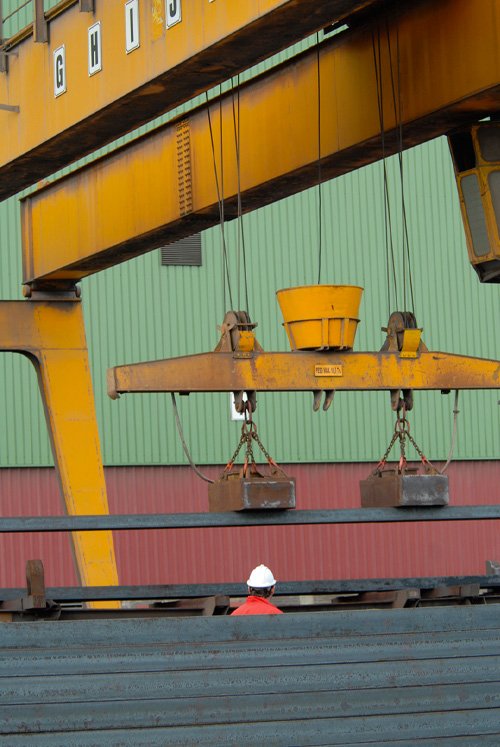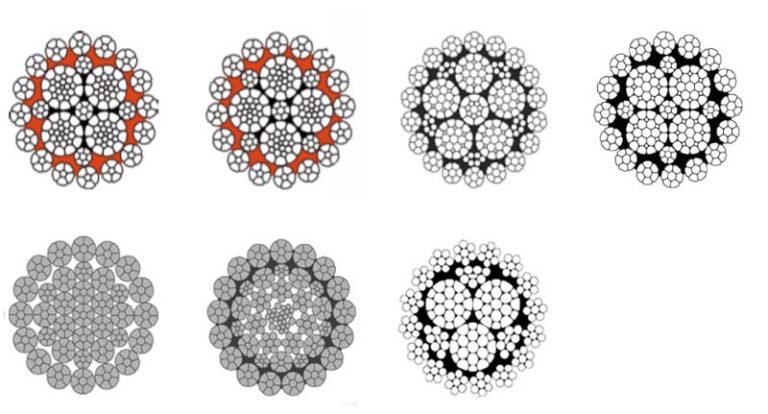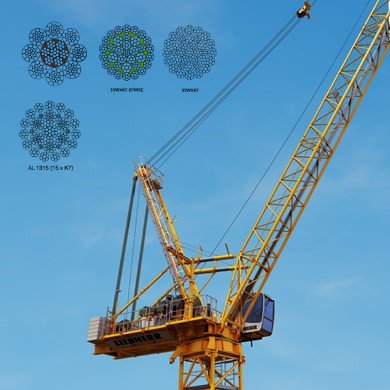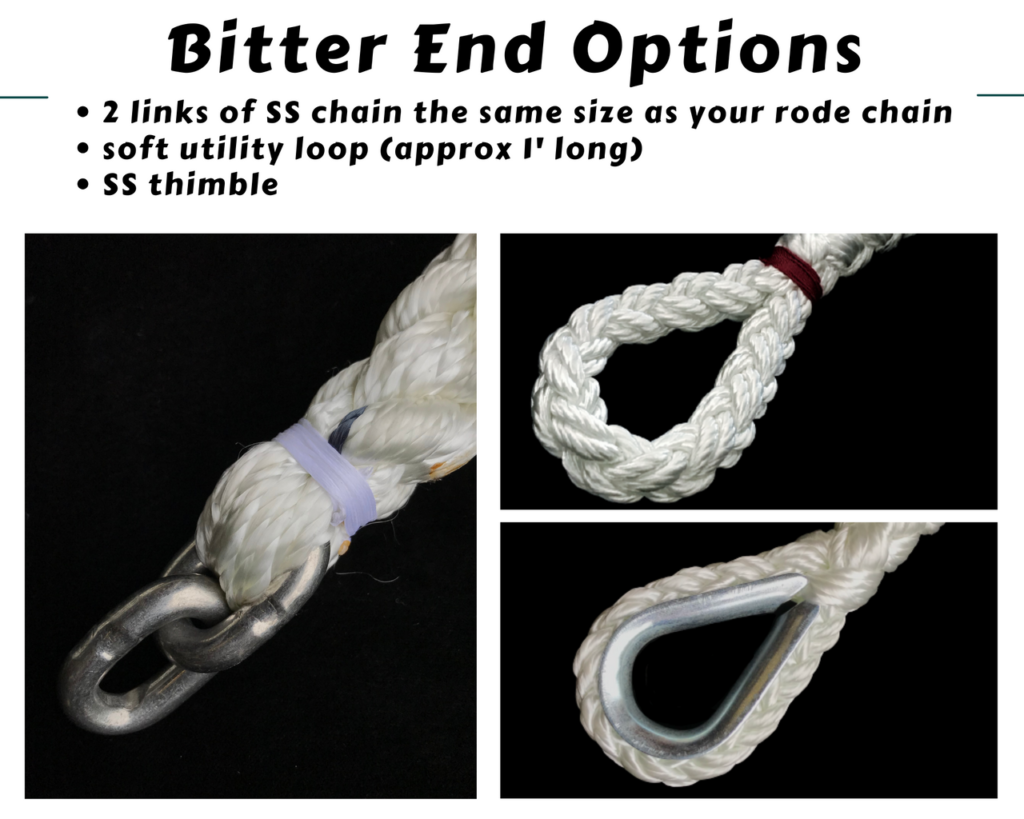
Many boaters struggle with securing an anchor rope. Problem: Improper connections can lead to lost anchors. Agitate: Losing an anchor is frustrating and costly. Solution: I’m here to show you the right way.
Connecting an anchor rope to a chain typically involves a thimble and shackle, ensuring a strong and secure link. This method prevents direct rope wear and distributes tension evenly.
I remember the first time I lost an anchor. It was a windy day. The knot just slipped. Since then, I’ve learned the best practices. Let’s make sure that doesn’t happen to you.
Why Do I Need a Chain Section for My Anchor Rope?
An anchor line needs a chain. Rope alone can fray quickly on the seabed. It also tangles easily.
I use a chain section to protect the anchor rope from abrasion on the seabed and to provide weight for better anchor setting. The chain adds crucial holding power.
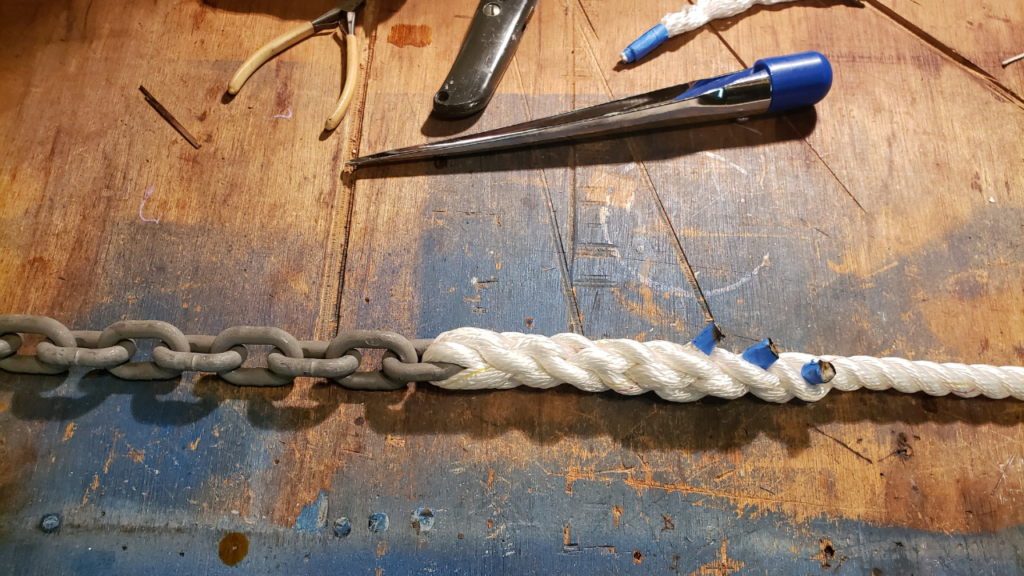
When I started out, I thought more rope was always better. But I learned a chain is vital. It keeps the anchor digging in. Without it, your boat drifts more easily.
What are the Benefits of Using a Chain?
- Abrasion Resistance: The chain is tough. It drags on rocks and shells. This protects my rope from damage.
- Weight for Setting: A heavy chain helps the anchor dig deep. It keeps the anchor fluke down. This creates a better hold.
- Shock Absorption: My chain absorbs shocks. When waves hit, the chain stretches slightly. This reduces stress on the rope.
- Angle of Pull: The chain creates a lower angle of pull. This helps the anchor stay set. It makes my anchoring more secure.
What are the Different Chain Types I Can Use?
I use various chain types for anchoring. Each has its own features.
| Chain Type | Features | Use Case |
|---|---|---|
| Galvanized | Zinc coating for corrosion resistance. Rusts over time. | General marine use, fresh and saltwater. |
| Stainless Steel | Very high corrosion resistance. More expensive. | Premium applications, less common for basic anchoring. |
How Much Chain Do I Need?
The amount of chain I use depends on boat size and depth.
- Rule of Thumb: A general guide is one foot of chain for every foot of boat length.
- Depth Considerations: In shallower water, I might use less chain. In deeper water, I add more.
- Weather: For stronger winds or currents, I always add more chain. It increases holding power.
What is the Best Knot to Tie My Anchor Rope to a Chain?
Choosing the right knot is important. A good knot is strong and reliable. It also needs to be easy to untie.
I recommend using a Palomar knot or an Anchor Bend knot to connect the anchor rope to a chain, ensuring a secure and durable attachment that resists loosening under tension.
I’ve tried many knots over the years. Some are too complex. Some slip too easily. The key is finding one that works every time.
How Do I Tie an Anchor Bend Knot?
The Anchor Bend is a classic. It is very secure for anchoring. Here are my steps:
- Pass the rope end through the chain link (or shackle) twice.
- Wrap the working end around the standing part. Do this two or three times.
- Pass the working end back through the first two turns.
- Pull tight to secure.
How Do I Tie a Palomar Knot?
The Palomar knot is known for its strength. It is also simple to tie.
- Fold about six inches of rope. Put the folded end through the chain link (or shackle).
- Tie a loose overhand knot using the loop and the standing line. Do not tighten it yet.
- Pass the loop over the entire anchor or shackle.
- Pull both ends of the line to tighten the knot firmly.
What is a Thimble and Why Do I Use It?
I always use a thimble. It protects the rope from wear. It makes the connection last longer.
- A thimble is a metal ring. It fits inside the rope loop.
- It prevents the rope from chafing. Chafing happens when the rope rubs against metal.
- I splice the rope around the thimble. This creates a strong, protected loop.
How Do I Use a Shackle to Connect My Anchor Rope to the Chain?
A shackle is the final connection. It links the rope (with thimble) to the chain.
| Shackle Type | Description | My Recommendation |
|---|---|---|
| Dee Shackle | Straight sides, good for simple inline connections. | Less common for anchors. |
| Bow Shackle | Wider, U-shaped mouth. Allows more movement, good for multiple lines. | I often use this. Allows more flexibility. |
| Twist Shackle | Designed to align components at a 90-degree angle. | Specialized uses, not primary for anchor. |
When I use a shackle, I ensure the pin is tight. Some boaters even “mouse” the pin. Mousing means wrapping thin wire around the pin. This keeps it from unscrewing.
What Are Some Common Mistakes to Avoid When Connecting Anchor Ropes?
I’ve seen many mistakes. Avoiding them keeps your anchor safe. It also keeps your boat safe.
Common mistakes include using undersized hardware, incorrect knots that slip, and neglecting to inspect the connection regularly. These issues can lead to anchor loss or system failure.
One time, I saw an anchor connected with just a zip tie. That was a disaster waiting to happen. Little things make a big difference.
What is the Danger of Under-Sized Hardware?
Using small shackles or weak thimbles is a risk. I always use hardware rated for the job.
- Breaking Strength: Hardware has a breaking strength. I make sure it exceeds the expected load.
- Wear: Small hardware wears faster. It can fail suddenly. I check my hardware regularly.
- Consequences: Undersized hardware can snap. This results in a lost anchor. It can also cause boat damage.
Why is Regular Inspection Important for My Anchor System?
I inspect my anchor system often. This prevents problems before they start.
- Rope Fraying: I check the rope near the chain. Look for any cuts or wear.
- Shackle Pins: I make sure all shackle pins are tight. I also check for bends or cracks.
- Chain Links: I look at the chain links. Check for rust,变形, or extreme wear.
- Thimble Condition: The thimble should be secure. Make sure it isn’t damaged or loose in the splice.
How Do I Maintain My Anchor Rope and Chain?
Proper maintenance extends life. It keeps my gear reliable.
- Rinse After Use: I rinse my rope and chain with fresh water. This removes salt and dirt.
- Dry Storage: I dry my anchor rode before storing it. This prevents mildew and rust.
- Lubrication: For shackles, I apply marine-grade lubricant to the threads. This prevents seizing.
- Professional Check: Every few years, I have my system professionally checked. Especially the splices.
Conclusion
I’ve learned that a solid anchor setup is crucial. By connecting your anchor rope to a chain using a thimble and shackle, and selecting the correct knot, you ensure security. Regular checks keep your system reliable.

